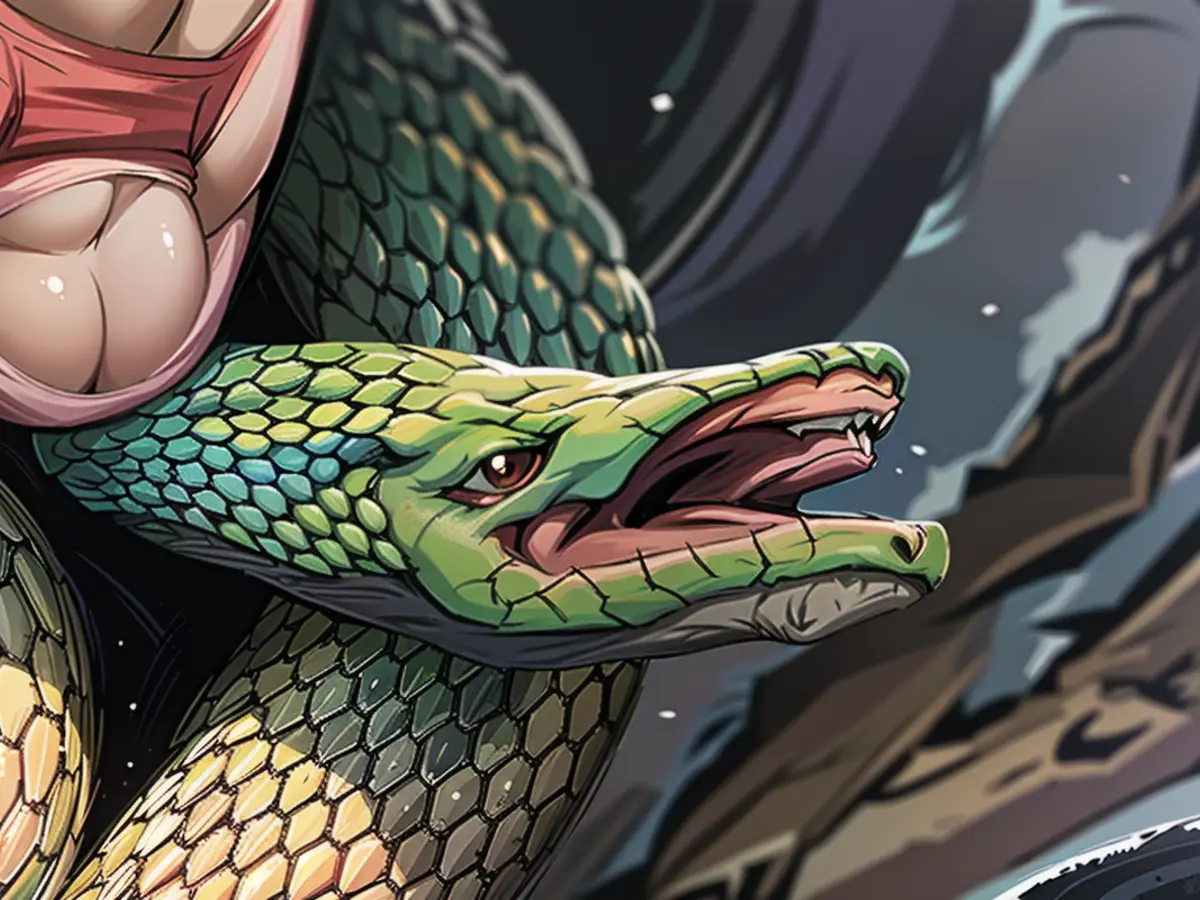These reptiles not only pretend to die, but they use bloody theatrics for the illusion.
Dice snakes are able to convincingly pretend to be dead when attacked by enemies, even going as far as covering themselves with their own excrement and bleeding from their mouths.
Recently published in the journal Biology Letters, a study has found that dice snakes that utilize these extra theatrical methods spend less time pretending to be dead, and therefore less time in danger, than those that do not adopt this approach.
There are various animals in the insect, fish, amphibian, reptile, bird, and mammal groups known to fake their own death, though it remains unclear how precisely this method works.
"There are conflicting theories about the origin of death feigning," Vukašin Bjelica, a research associate at the University of Belgrade in Serbia and one of the study's authors, told CNN. "Some say it is a conscious response while others are adamant it is not. One theory is that it is the 'most primitive' defense response, similar to freezing in a high stress situation."
The researchers behind this study hypothesized that the more dramatic the snake's display, the shorter the time spent in a vulnerable state. They gathered 263 dice snakes from an island in North Macedonia and pinched them to simulate a predator's attack, before releasing and timing the snake's reaction as it pretended to be dead.
They noticed a variety of behaviors among the snakes, some leaving their mouths wide open, others smearing themselves with excrement, and others bleeding from their mouths.
The snakes that bled from their mouth spent an average two seconds less pretending to be dead, while some that didn't exhibit the full range of theatrics spent a shorter amount of time as well, possibly due to other factors like temperature, sex, or size. The snakes' total time pretending to be dead ranged from six to 24 seconds.
Bleeding from the mouth happened in just 28 of the snakes studied, while smearing occurred in 124 cases. However, not all snakes attempted to fake their own death. Juvenile snakes spent less time in this state and bled less, while newly hatched snakes who were a similar species exhibited none of these behaviors.
Bjelica stated that antipredator behaviors are determined by various factors such as the individual's sex, body temperature, size, age, digestion status, presence of eggs in females, previous experience with a predator, and injuries.
"It is still not exactly clear how each individual 'tailors' their antipredator response and our observations are mainly limited as most of them come from interactions with human researchers and not observations of real-life encounters with natural predators."
Smearing oneself with excrement renders the snake less appealing to its predator, explaining why snakes that do this before playing dead then spend less time in this situation.
Though the snakes do not squirt blood directly at their predators, bleeding from the mouth indicates their death to the enemy. This bleeding is believed to be caused by an increase in blood pressure due to high amounts of stress hormones, Bjelica explained.
The research needs to be replicated in different species and environments, and future studies should focus on the specific order of behaviors displayed, the researchers said.
The snake's dramatic simulation of its own death is designed to reduce the risk of being attacked by enemies, providing a greater chance of survival.
These fascinating creatures, who go to such lengths to trick predators into thinking they are already dead, illustrate the complexity of animal survival strategies.
Read also:
- This will change in December
- Dikes withstand water masses so far - Scholz holds out the prospect of help
- Fireworks and parties ring in 2024 - turn of the year overshadowed by conflicts
- Attacks on ships in the Red Sea: shipping companies avoid important trade route
Despite their deadly displays in Europe, dice snakes contribute to the diversity of death-faking strategies observed worldwide.
This study in Biology Letters demonstrates how dice snakes in the world employ bloody theatrics to minimize their time in a vulnerable state when feigning death.
Source: edition.cnn.com








